
Learning from Observations Chapter 18 Section 1 -3
Learning from Observations Chapter 18 Section 1 – 3

Outline ·Learning agents ·Inductive learning Decision tree learning
Outline • Learning agents • Inductive learning • Decision tree learning
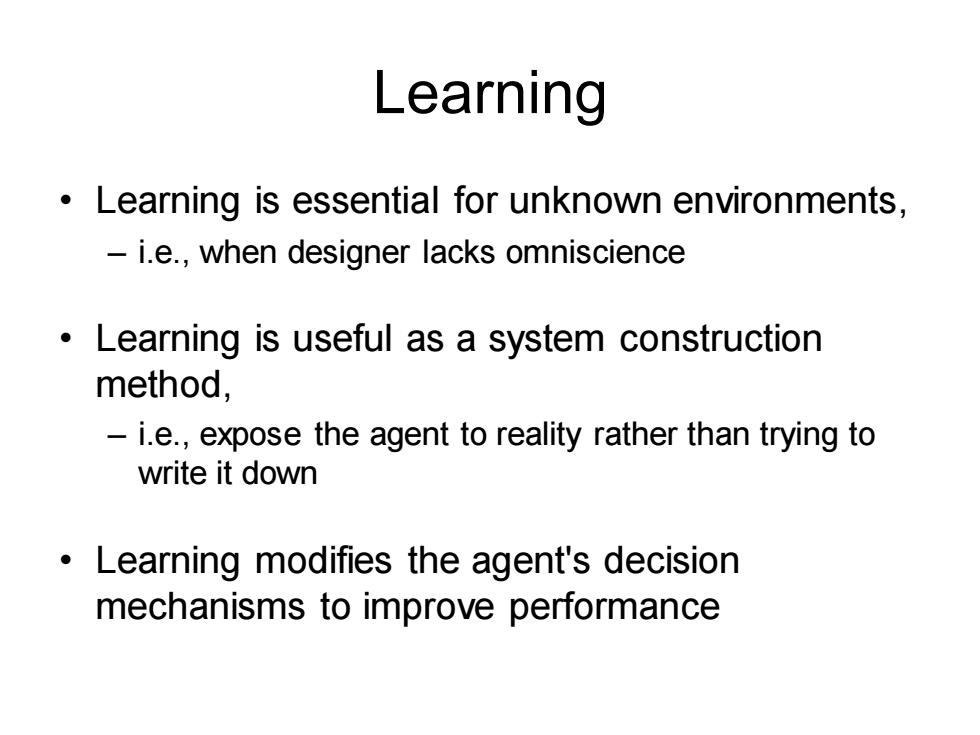
Learning Learning is essential for unknown environments, i.e.,when designer lacks omniscience Learning is useful as a system construction method, -i.e.,expose the agent to reality rather than trying to write it down Learning modifies the agent's decision mechanisms to improve performance
Learning • Learning is essential for unknown environments, – i.e., when designer lacks omniscience • Learning is useful as a system construction method, – i.e., expose the agent to reality rather than trying to write it down • Learning modifies the agent's decision mechanisms to improve performance
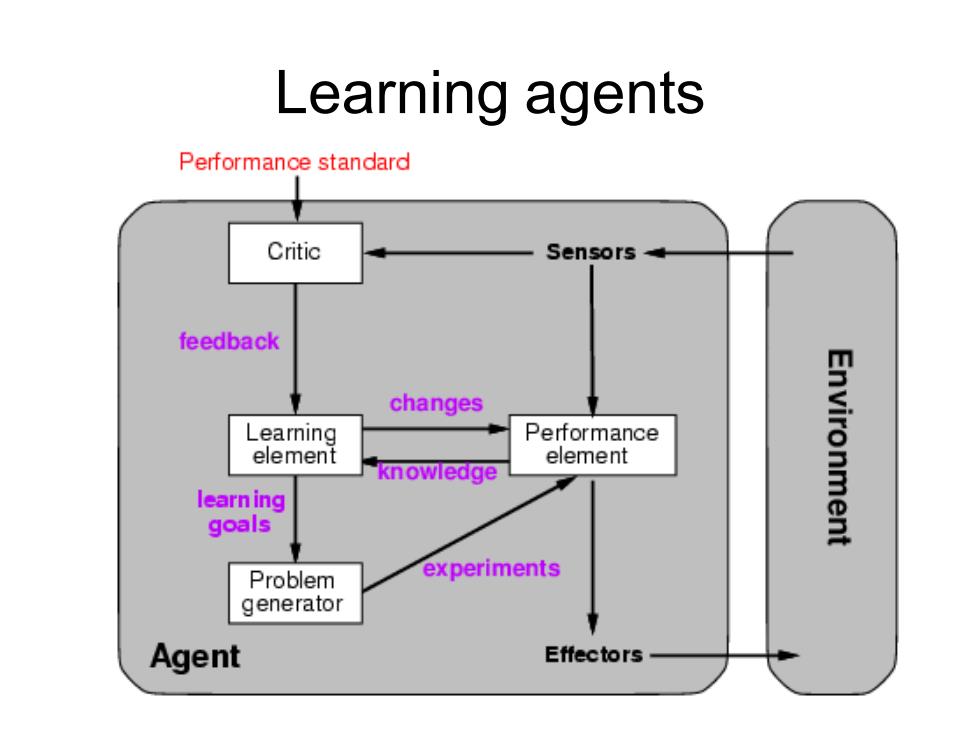
Learning agents Performance standard Critic Sensors feedback changes Learning Performance element element knowledge learn ing Environment goals Problem experiments generator Agent Effectors
Learning agents
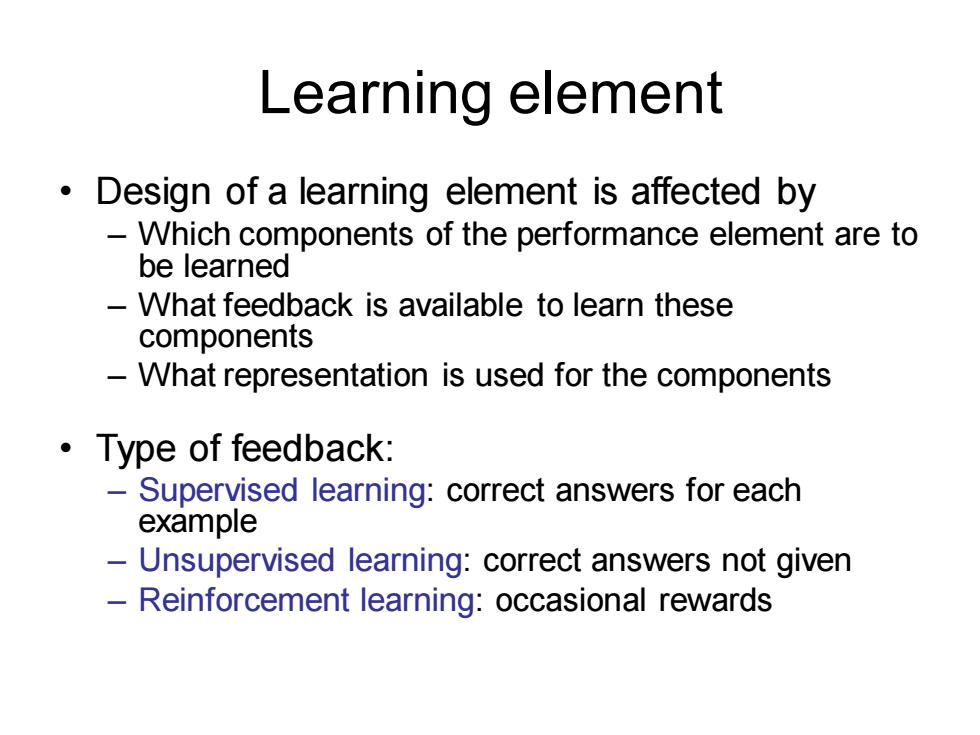
Learning element Design of a learning element is affected by -Which components of the performance element are to be learned What feedback is available to learn these components -What representation is used for the components ·Type of feedback: Supervised learning:correct answers for each example Unsupervised learning:correct answers not given Reinforcement learning:occasional rewards
Learning element • Design of a learning element is affected by – Which components of the performance element are to be learned – What feedback is available to learn these components – What representation is used for the components • Type of feedback: – Supervised learning: correct answers for each example – Unsupervised learning: correct answers not given – Reinforcement learning: occasional rewards
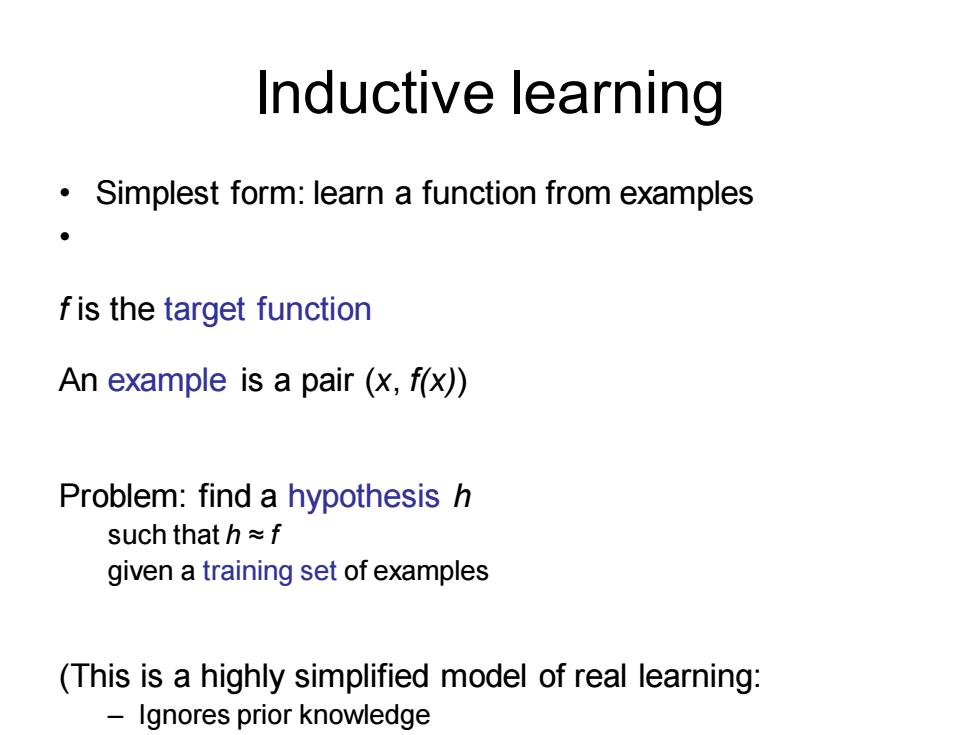
Inductive learning Simplest form:learn a function from examples f is the target function An example is a pair (x,f(x)) Problem:find a hypothesis h such that h≈f given a training set of examples (This is a highly simplified model of real learning: Ignores prior knowledge
Inductive learning • Simplest form: learn a function from examples • f is the target function An example is a pair (x, f(x)) Problem: find a hypothesis h such that h ≈ f given a training set of examples (This is a highly simplified model of real learning: – Ignores prior knowledge – Assumes examples are given)
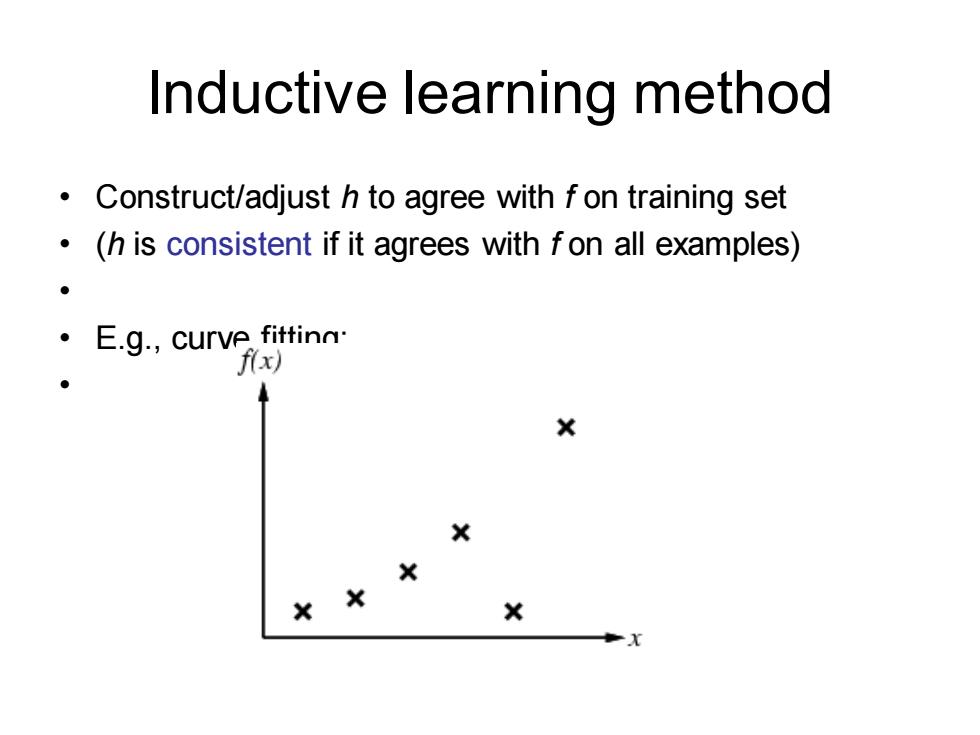
Inductive learning method Construct/adjust h to agree with f on training set (h is consistent if it agrees with fon all examples) E.g.,curve fittinn f(x) × X X X X
Inductive learning method • Construct/adjust h to agree with f on training set • (h is consistent if it agrees with f on all examples) • • E.g., curve fitting: •
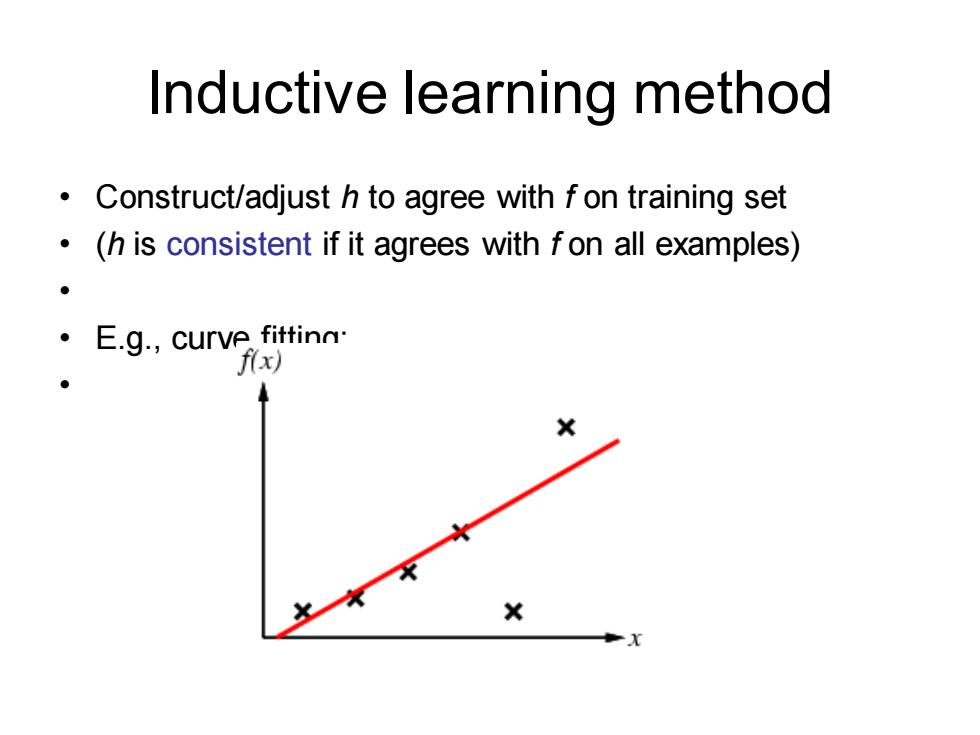
Inductive learning method Construct/adjust h to agree with f on training set (h is consistent if it agrees with f on all examples) E.g.,curve fittinn. f(x)
Inductive learning method • Construct/adjust h to agree with f on training set • (h is consistent if it agrees with f on all examples) • • E.g., curve fitting: •

Inductive learning method Construct/adjust h to agree with f on training set (h is consistent if it agrees with fon all examples) ● E.g.,curve fittinn. f(x)
Inductive learning method • Construct/adjust h to agree with f on training set • (h is consistent if it agrees with f on all examples) • • E.g., curve fitting: •

Inductive learning method Construct/adjust h to agree with f on training set (h is consistent if it agrees with f on all examples) E.g.,curve fittinn. f(x)
Inductive learning method • Construct/adjust h to agree with f on training set • (h is consistent if it agrees with f on all examples) • • E.g., curve fitting: •